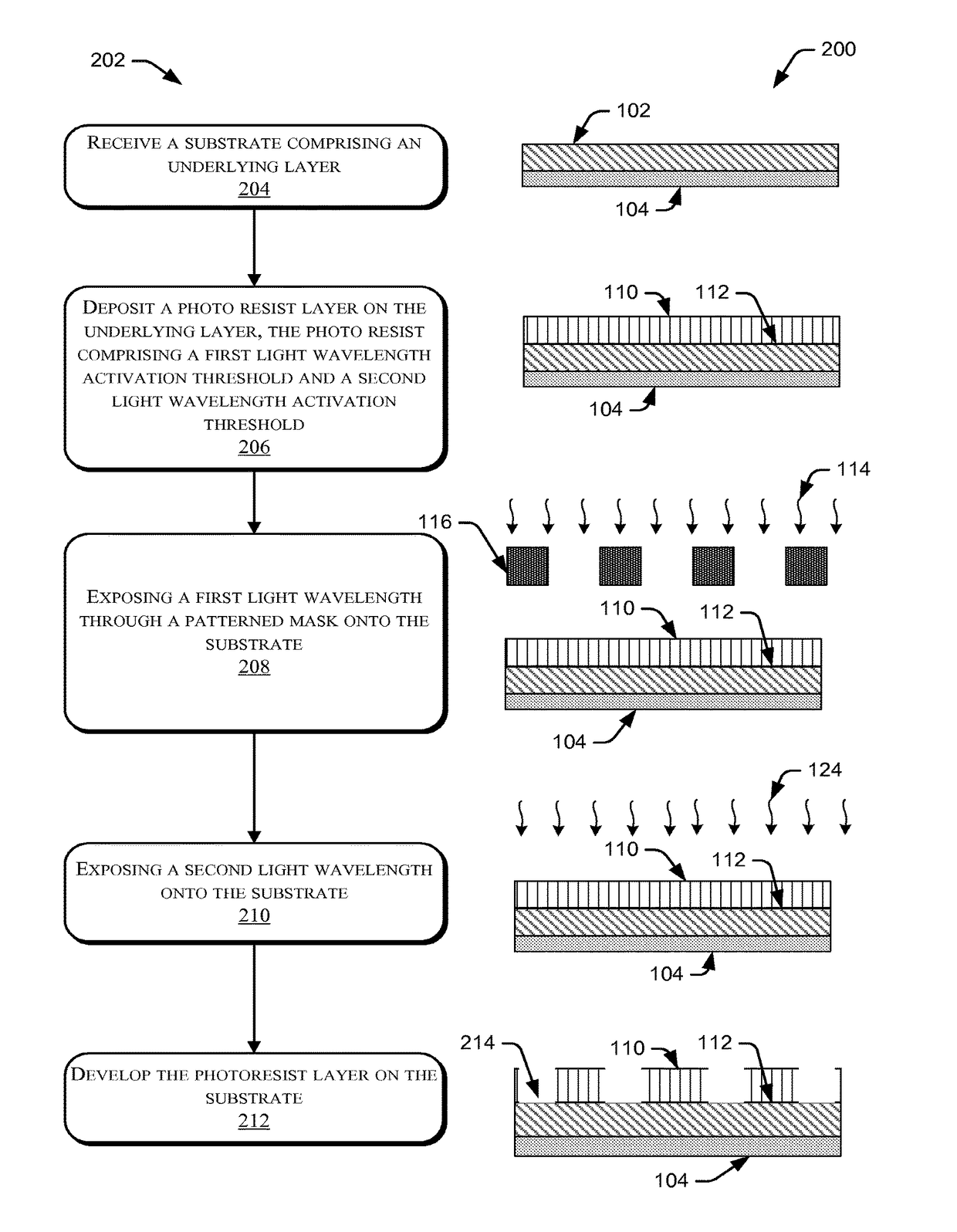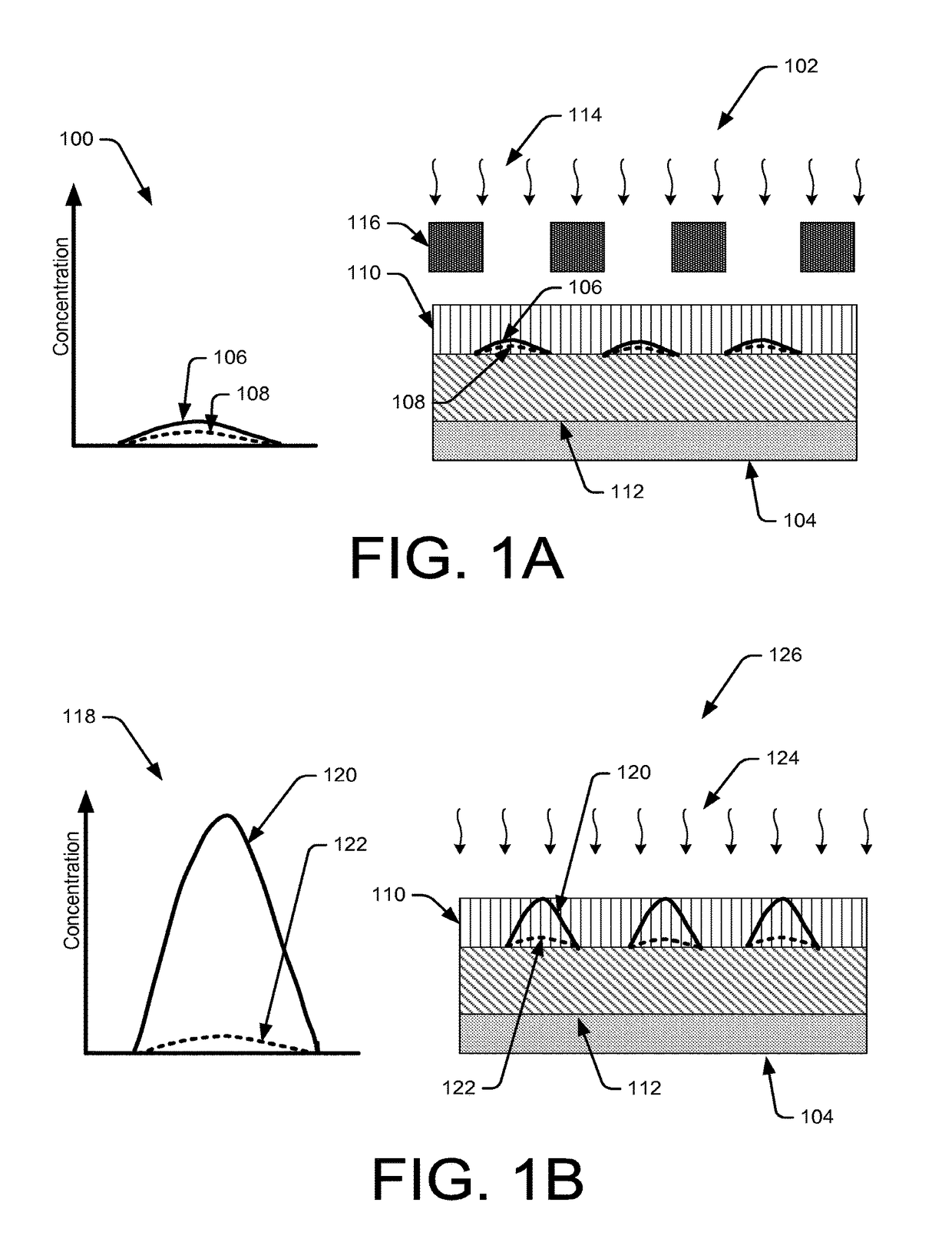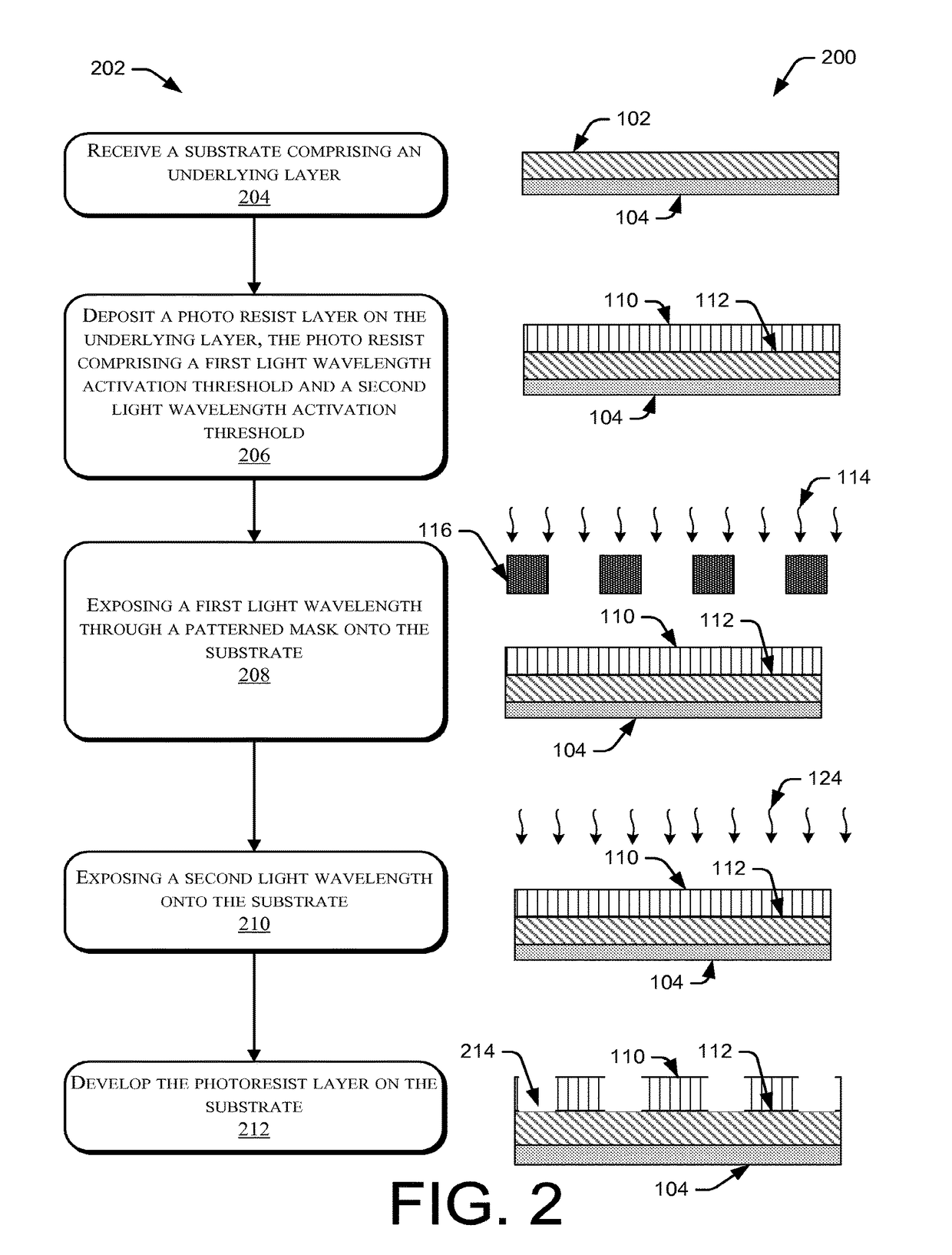Methods and techniques to use with photosensitized chemically amplified resist chemicals and processes
a chemical and amplified resist technology, applied in the field of methods and techniques to use with photosensitized chemically amplified resist chemicals and processes, can solve the problems of euv shot noise, non-optimum line width roughness (lwr), ler, and cwr depending, and achieves the effect of increasing chemical reactions, maximizing absorbance, and improving acid generation
- Summary
- Abstract
- Description
- Claims
- Application Information
AI Technical Summary
Benefits of technology
Problems solved by technology
Method used
Image
Examples
Embodiment Construction
[0012]Although the present invention will be described with reference to the embodiments shown in the drawings, it should be understood that the present invention can be embodied in many alternate forms of embodiments. In addition, any suitable size, shape or type of elements or materials could be used.
[0013]In semiconductor manufacturing, photoresist or light sensitive materials have been used to manufacture electronic devices by depositing, patterning, and etching films on a substrate. Shrinking the dimensions of the electronic devices and maintaining image quality (e.g., resolution, line width roughness, and sensitivity) to improve device performance and yield. Extreme Ultraviolet (EUV) photolithography is one approach to shrinking dimensions that has inherent limitations that may impact existing photoresist chemistries. For example, EUV photoresist may need to compensate for the lower power of EUV light sources while maintaining resist sensitivity and image resolution. One appro...
PUM
| Property | Measurement | Unit |
|---|---|---|
| wavelengths | aaaaa | aaaaa |
| wavelengths | aaaaa | aaaaa |
| wavelengths | aaaaa | aaaaa |
Abstract
Description
Claims
Application Information
 Login to View More
Login to View More - R&D
- Intellectual Property
- Life Sciences
- Materials
- Tech Scout
- Unparalleled Data Quality
- Higher Quality Content
- 60% Fewer Hallucinations
Browse by: Latest US Patents, China's latest patents, Technical Efficacy Thesaurus, Application Domain, Technology Topic, Popular Technical Reports.
© 2025 PatSnap. All rights reserved.Legal|Privacy policy|Modern Slavery Act Transparency Statement|Sitemap|About US| Contact US: help@patsnap.com



